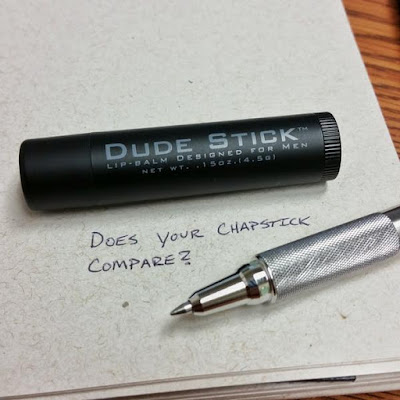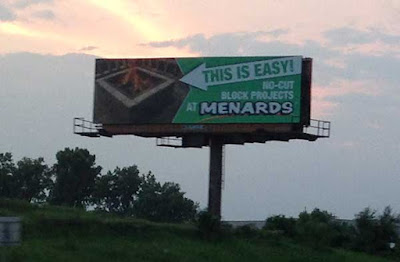Looking back through my Twitter favorites for June, the issues spring out in reverse order: the Supreme Court decision on marriage equality, taking down the Confederate flag, and the killings in Charleston. First those three, starting with marriage equality:
A bit jealous that Minnesotans have a Black, Muslim congressman who supports marriage equality.Taking down the ridiculous Confederate flag:
By Saladin Ahmed
Marriage used to be so simple. You'd meet a man, buy his daughter; make awkward conversation til she died in childbirth. What went wrong?
By Alice R Fraser
So gay marriage is a threat to Democracy, but Citizens United isn't?
By Robert O. Simonson
It was a 5-4 ruling: Men 4-2 against, Women 3-0 for. Another reminder of benefits of women in leadership positions.
By Vinicius Vacanti
If you had told me in 2004 that America would have a black president, universal health care, and gay marriage by 2015, I would have laughed.
By Ezra Klein
I'd take Scalia's concern about SCOTUS inventing laws more seriously if he hadn't recently waved his hand and turned companies into people.
By Ken Tremendous
Scalia's next dissent will consist of him singing "Daisy" over and over while he slowly winds down into nothingness.
By jay smooth
Weird that the US now sanctifies the right to marry but has no similar protection of the right to vote.
By David Roberts
How far we've come since the President Obama & Senator Clinton ran against gay marriage in 2008! People can change. Never give up.
By Michael Moore
Don't worry, conservatives. In a way, the Supreme Court stopped gay marriage for good. Because it's just "marriage" now.
By Hemant Mehta
"Southern Lives Matter." Even when showing their hate for Black people they manage to appropriate from Black people.Reacting to domestic terrorism when it’s committed by a white guy, and the aftermath of the Charleston mass murders:
By William Anderson
We also have a heritage in Italy. It's called fascism. We don't celebrate it or miss it. Time to grow up for some Americans.
By Federico Viticci
I can’t believe we’re even discussing whether to take down the flag of a treasonous, racist revolt against our country.
By David Roberts
The people who are offended by "Happy Holidays" want to know what your problem with the Confederate flag is.
By Pete Nicely
Bree Newsome is like part Spider Woman, part Ida B. Wells:
By Disgruntled Haradrim
Dylann Roof gets "a difficult childhood,” Mike Brown gets "no angel.”And the rest of my favorite subjects and a sprinkling of chuckles and aha moments. (This list continues to run a bit shorter than average; I'm still not spending as much time as I was on Twitter before May.)
By Sarah Kendzior
Still a lot of talk about how moved folks are by the victims’ sense of "forgiveness." One way to reflect this is by taking down the flag.
By Ta-Nehisi Coates
In the black church forgiveness isn't to absolve the horror but to preserve one's soul from being consumed by hate.
By The Libyan
Go directly to forgiveness. Do not pass accountability. Do not collect reparations.
By Vandal
Like it or not, killers ARE human. There's nothing wrong with 'humanizing' white killers. The problem is that ONLY white killers get to be human.
By Saladin Ahmed
In retrospect Sandy Hook marked the end of the US gun control debate. Once America decided killing children was bearable, it was over.
By Dan Hodges
Bobby Jindal says this is a time to say "we're not blacks or whites...we're Americans."
By Ana Marie Cox
Sure that works ... Unless of course you're ACTUALLY fucking Black.
By besos!
Same whites who claim the Charleston church shooting is an ”isolated incident" shout "culture of poverty" and "thug culture" to demonize the poor and blacks.
By Paul Thomas
"If they are to be a part of our society, they must do a better job of rejecting violence and fanaticism." Never said about young white men.
By Saladin Ahmed
"Troubled loner w/ mental illness" & "suggestible ideologue taking cues from racist superstructure" are not mutually exclusive explanations.
By David Roberts
We can't swim, we can't buy skittles, we can't listen to loud music, we can't shop, we can't play, we can't breathe, we can't pray.
By P.K. Eduah
What if we made you terribly aware of your deficits every single day? What if you had to work on those deficits every moment of your day?
By Sisyphus38
Name-calling is what happens when you desperately want to argue, but you are in fact inarticulate.
By Neil deGrasse Tyson
I HAD THE TIME OF MY LIFE AND I NEVER FELT THIS WAY BEFORE:
By Sean Leahy
The Greek crisis is being fought over $240 billion in Greek debt. Wondering if stocks will lose over $240 billion in value because of it.
By Steven Greenhouse
!!! "In Alabama, an adult in a 4-person household w/ income of $4,400 a year earns too much to qualify for Medicaid." [Citing the New York Times.]
By Steven Greenhouse
I like the term "douchebag" because it means "a thing that women were historically told they needed, but actually does more harm than good."
By Occubrarian Rachel
Protest is confrontation. Protest is disruption. Protest is the end of silence. It is not the solution, it creates space for the solution.
By DeRay Mckesson
Hours/week associate professors spend on service by race/gender:
By tressie mc
The testing industry makes more money annually than the NFL and the box office.
By Nikhil Goyal
Walkable cities called "a trend." Hardly: thriving cities have been walkable for centuries. Planning around cars is a blip in comparison.
By jennifer keesmaat
Don’t reactionaries ever notice how much they have in common with other reactionaries, even their purported enemies?
By David Roberts
Remember: when someone calls you a resource, call them overhead.
By Sean Cribbs
When I was in college a pack of smokes was $1.50. Everyone smoked. Now they’re $10. Almost no one smokes. Make bullets $1000.
By Mike Monteiro
It’s dangerous to assume that you are a better human than slaveholders. It misses the great power of structures, and furthers the myth of the individual.
By Ta-Nehisi Coates
The idea that the solution to gun violence is more guns is analogous to the medieval belief that you cure syphilis by giving it to a virgin.
By Neven Mrgan
Don't do this, Target:
By abi who?
Local grocery store has baby formula locked in glass cage, across from security desk. Think what it means that baby formula is a theft risk.
By Andy Barenberg
Shout out to the people outraged that the president said "nigger" once but don't care about the countless times he's been called it since ’08.
By Marc Lamont Hill
obama: racism is real. media: ... obama: racial tension in the US is a serious issue. media: ... obama: "nigger.” media: OOO U SAID A BAD WORD.
By blacklivesmatter
For every criminal killed in self defense, 2 people die from misfire, 34 die from gun homicide, and 78 die from gun-suicide. So the "logic" that more guns would prevent gun violence is not only crazy, it is demonstrably false.
By Jonathan Foley
The world spends $15 billion each year on ocean cruises while all it would take is $11 billion to provide clean drinking water for all.
By Injustice Quotes
I wish we could have expansion of train service, just one more train to Chicago a day from Union Depot.
By Avidor
“What are we supposed to do, just have dirt around our house on four acres?” Rich Californians on water limits.
By Joseph Nathan Cohen
I think it is OK when women are really into furniture and property because it used to be our cousin.
By Aparna Nancherla
“There is nothing noble in being superior to your fellow man; true nobility is being superior to your former self.” ― Ernest Hemingway
By David Roberts
And this is what happens when your education system dies:
By Charles Hoskinson
In conversations with peers in my school district I notice that they talk a good game about innovation and change but they really want known and sameness.
By Sisyphus38
On an average day, an offshore wind turbine produces the energy needed for production of 20 tonnes of steel, paying back the energy invested.
By Kees van der Leun
Tell me more about how hiring people you feel comfortable with, based on an interview, is going to change your school.
By Sisyphus38
Your afternoon reminder that masculinity is the most fragile thing in the world:
By c_d
It's crazy that once personal video recorders became ubiquitous UFOs stopped visiting Earth and cops started brutalizing people all the time.
By Stephen Judkins
America is founded on "the race card," the false superiority of whiteness. "Don't pull the race card" is code for "black folk be silent."
By DeRay Mckesson
Online is a horrible urban legend come to life. If you say a brand's name too many times, it appears in order to torment you.
By Matt Christman
If America's police for one day treated white kids like kids of color, they'd all lose their pensions. [Referring to the police overreaction at a Texas pool party.]
By Andrew J. Padilla
Bullet points and spacing can add clarity to your writing:
By Jason L. Sparks
Monthly reminder: They're not SPEAKING through a translator; you are LISTENING through a translator.
By Merlin Mann
Learning should help child discover unique talents, not standardize them.
By John Chase
A useful response to *so* many Twitter conversations:
By Tom Tomorrow









































